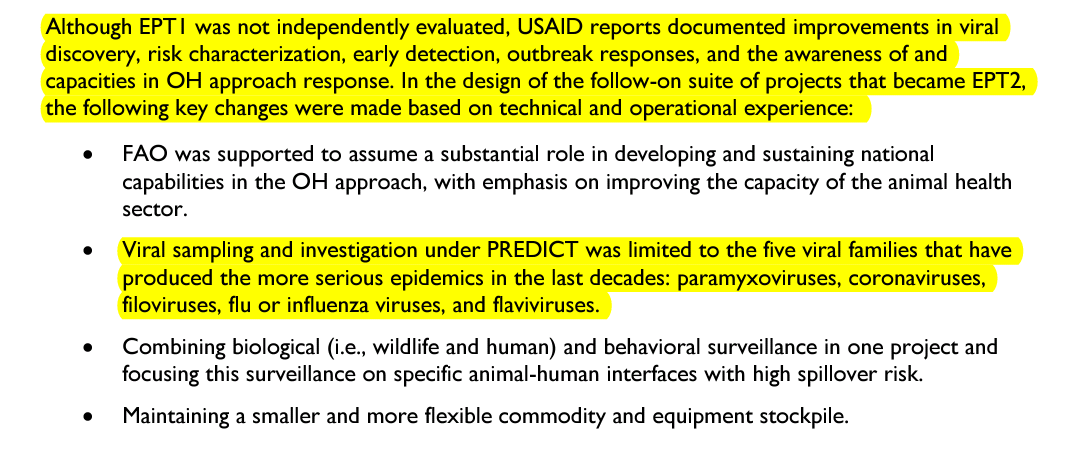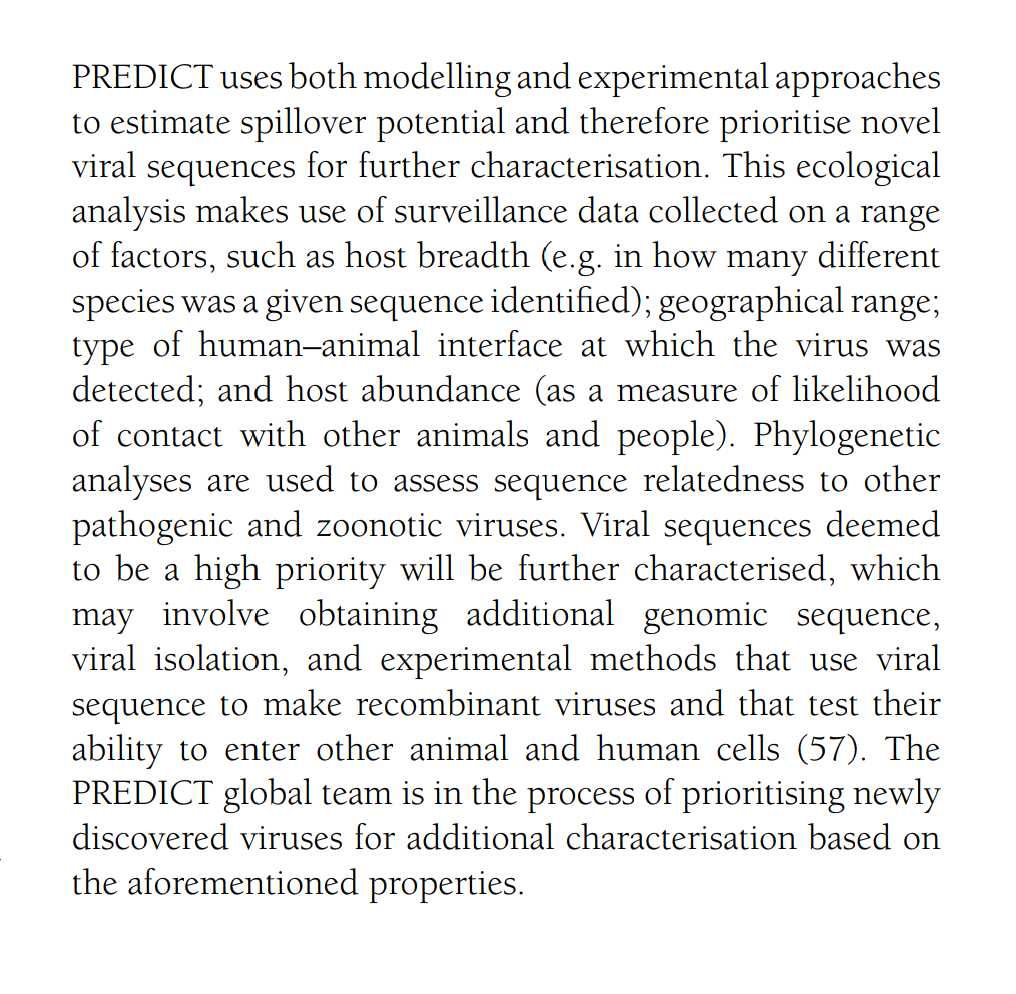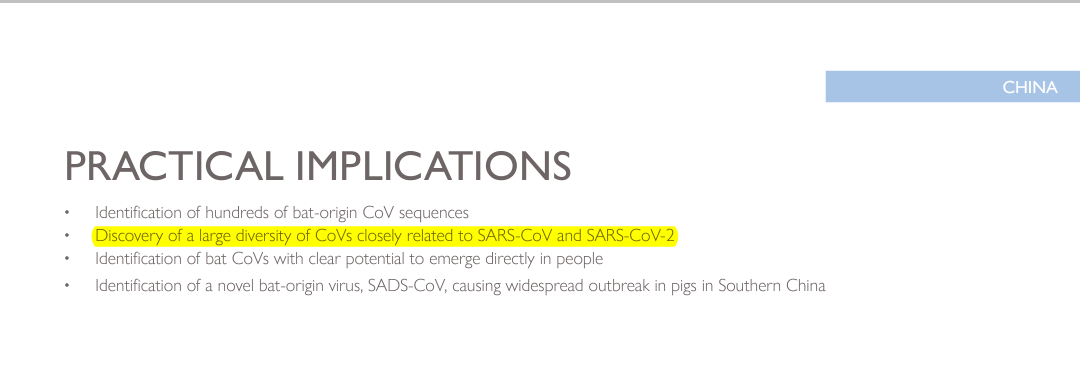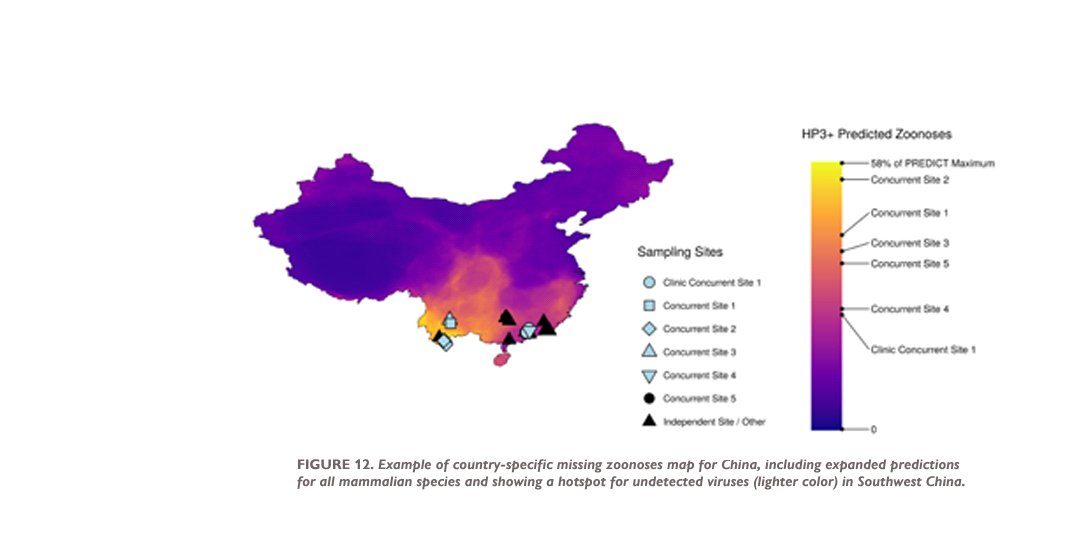
Thread: On @USAID PREDICT, Global Virome Project (GVP) and China Virome Project (CVP); some problematic issues with these projects, it's link to #originsofSARS2; and illuminating re: reason there's a lack of data transparency. 

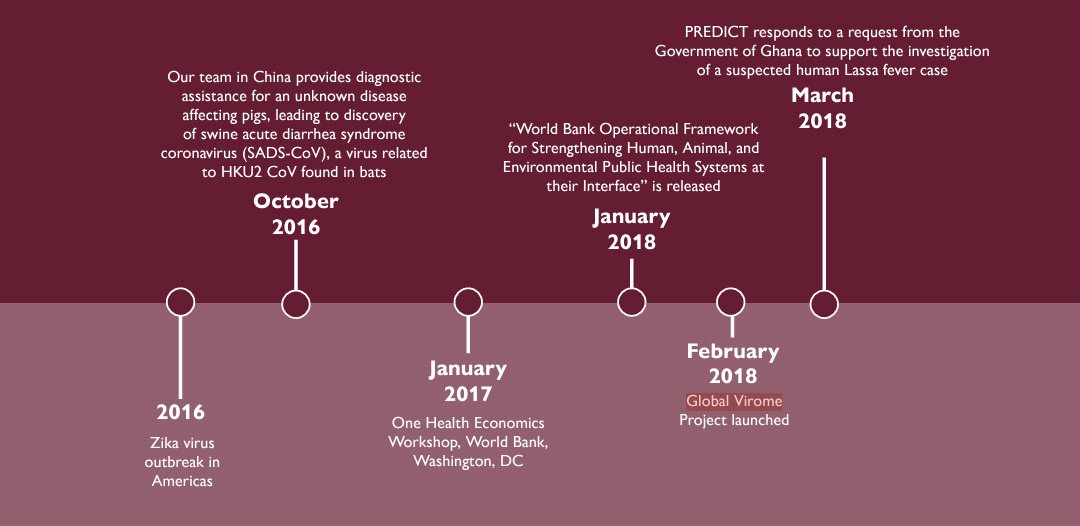
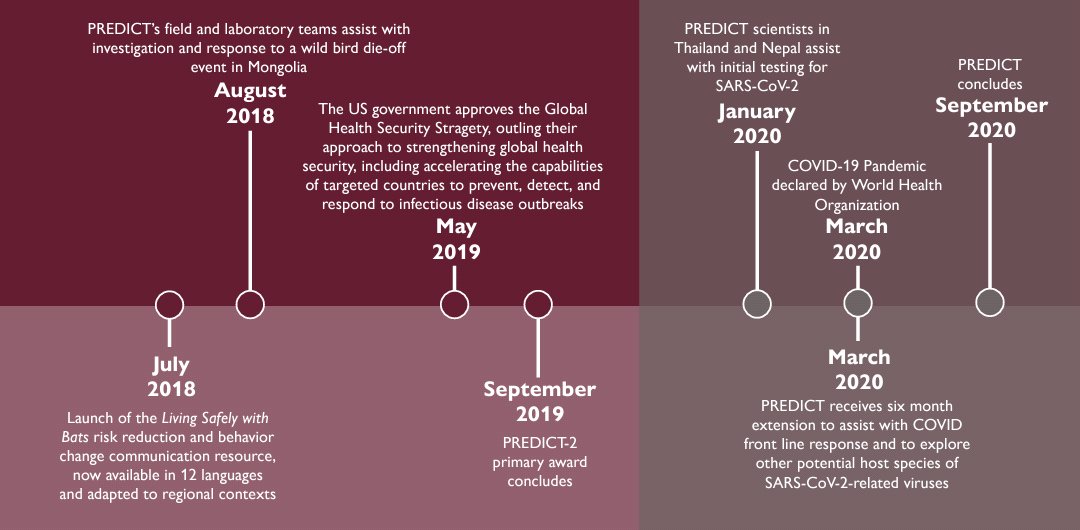
First, a disclaimer: this thread queries the evidence (quotes, statements, and snippets from media reports and official documents in public domain) and contains neither assumption nor accusation of intent.
Ok, so now a bit about PREDICT's journey: PREDICT was initiated in 2009, as part of USAID Emerging Pandemic Threats (EPT), to detect viruses with pandemic potential.
It was planned as a 5-year run. EPT-1 ended in 2014, and EPT-2 followed for another 5-year run.
It was planned as a 5-year run. EPT-1 ended in 2014, and EPT-2 followed for another 5-year run.

PREDICT implementing partners: University of California-Davis (prime contractor) with EcoHealth Alliance, Metabiota, Smithsonian Institution, and Wildlife Conservation Society.
Project Ceiling: $100,000,000

Project Ceiling: $100,000,000


I'll add a quote here: "“PREDICT is the largest virus hunting effort underway today. It’s also a proof of concept for something even more ambitious: the Global Virome Project.”
smithsonianmag.com/science-nature…
smithsonianmag.com/science-nature…
But not everyone was enamoured of the idea: “A lot of the stuff they produce is hype," he says, referring to PREDICT’s work. "It's more PR than science." 

In this report, USAID officials expressed apprehensions about transparency over the data collected under PREDICT.
USAID Emerging Pandemic Threats 2 Program Evaluation (March 2018)
web.archive.org/web/2019020817…

USAID Emerging Pandemic Threats 2 Program Evaluation (March 2018)
web.archive.org/web/2019020817…


Some recommendations were even made to that effect: "USAID should clarify its legal authority over raw data collected under EPT2
that is in the possession of an EPT2 partner."
that is in the possession of an EPT2 partner."
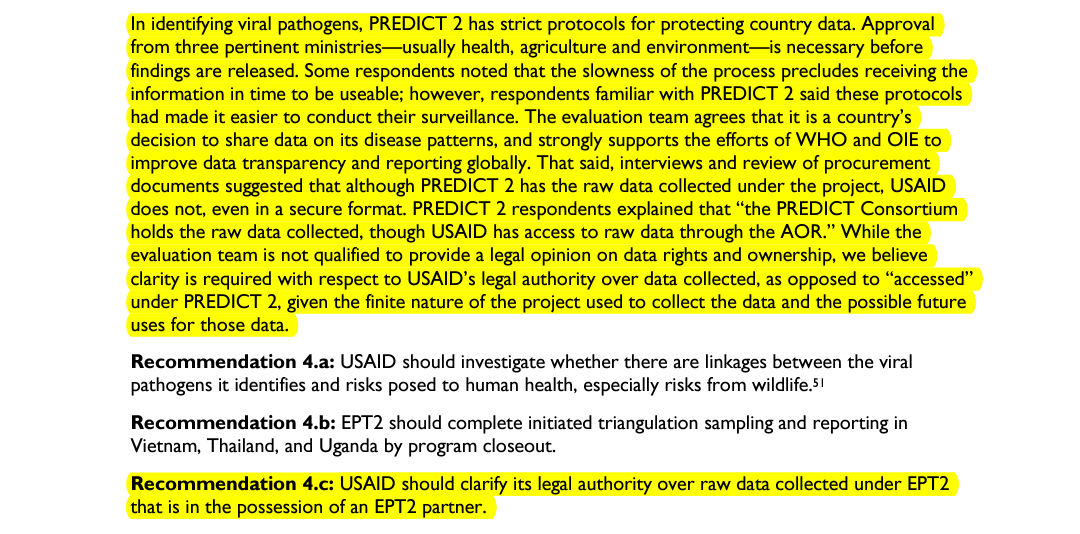
However, in practice, PREDICT could only release the data if the host government agreed: "After interpretation, results are provided to host governments for examination, to inform policy, and FOR APPROVAL for public release through the PREDICT data site”
ohi.sf.ucdavis.edu/sites/g/files/…

ohi.sf.ucdavis.edu/sites/g/files/…
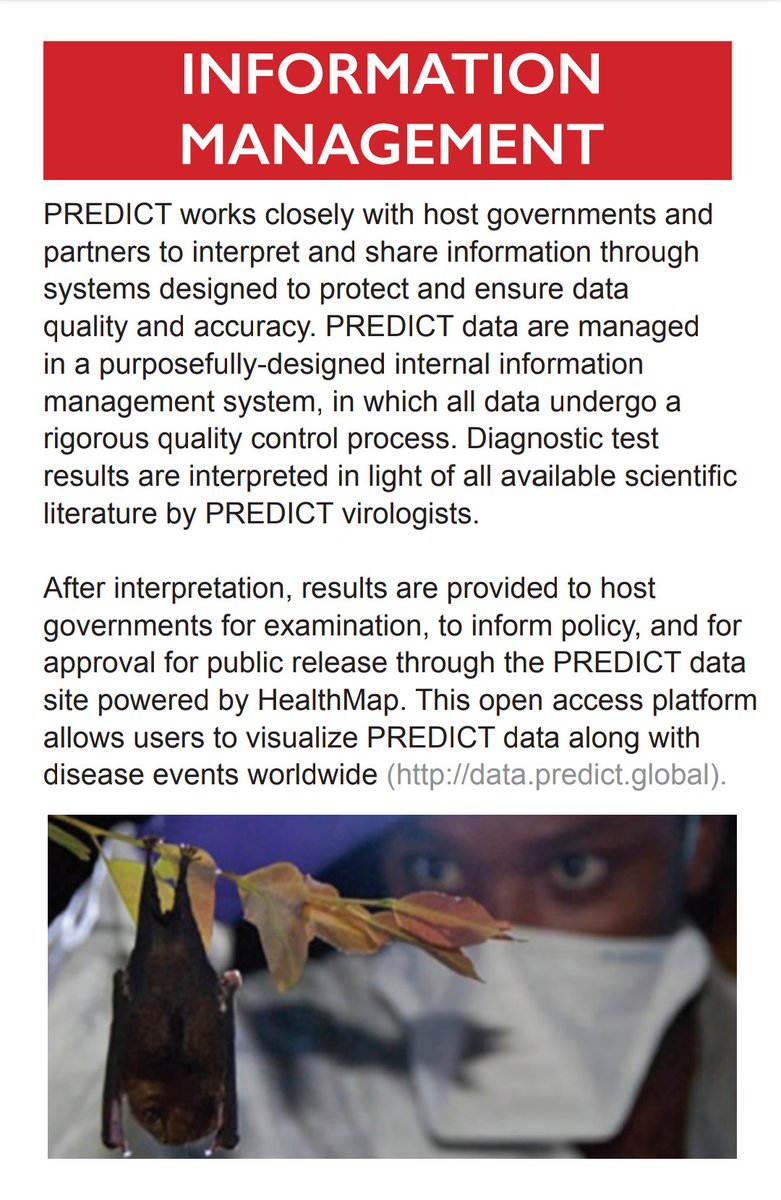
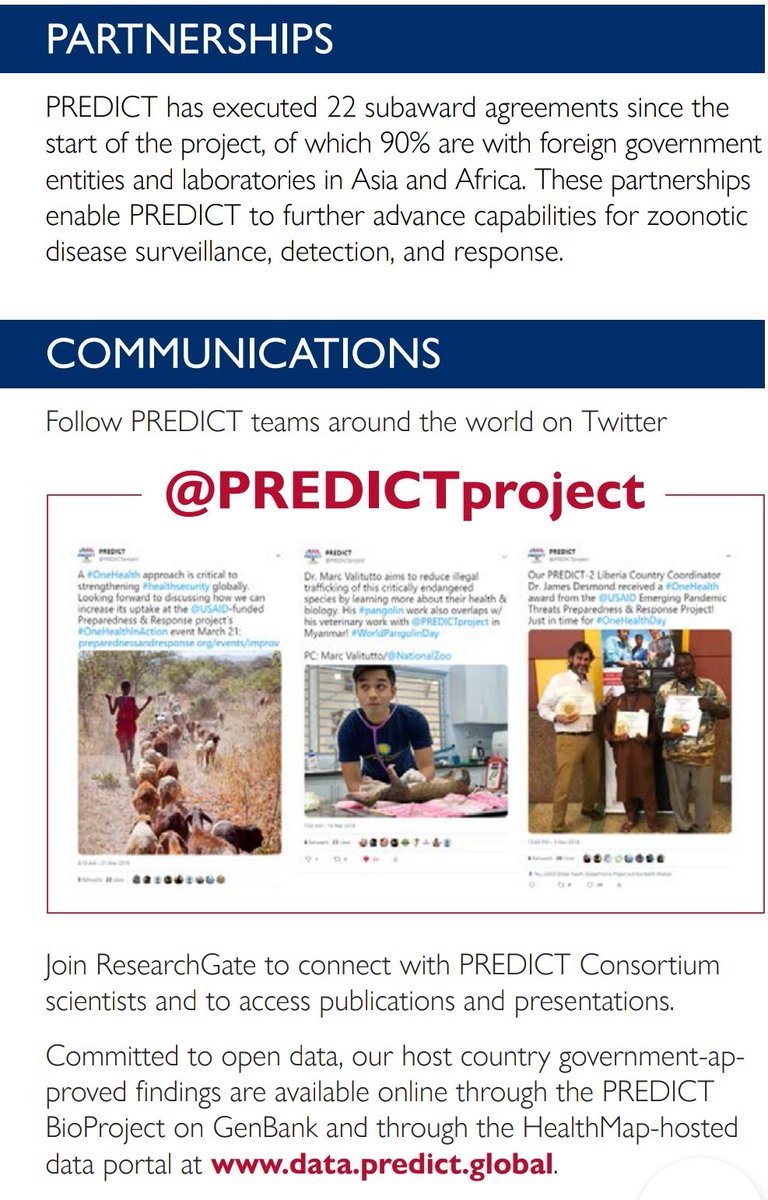
Given this context, and the fact that Latinne et al. was funded by USAID PREDICT, no wonder then that there's a serious lack of transparency in data reporting.

https://twitter.com/Ayjchan/status/1334509253516783625?s=20

Now, the next part of the thread will focus on Global Virome Project (GVP), and the China Virome Project (CVP; part of the GVP). ☕ 

I'll add some quotes here: "PREDICT showed us that we are ready to do this on a much larger scale,” Mazet told Seeker. “It served as a proof of concept.”
seeker.com/health/the-glo…
seeker.com/health/the-glo…

"The first stage of GVP research is dedicated to identifying and cataloging unknown viruses, which will then be used, ideally, to develop vaccines, pharmaceuticals, or other. The GVP will work with the UN, dozens of intl health orgs, local govt, & industry partners such as Merck"
"As the GVP builds up a picture of every virus's ecologic profile.., we can target our vaccines and drugs to the people on the front line of the next emerging disease," said lead author Dr. Dennis Carroll, director of USAID’s EPT.
ucdavis.edu/news/ambitious…
ucdavis.edu/news/ambitious…
"The idea has been around for a while and is supported by individual scientists and organizations including the USAID, the nonprofit EcoHealth Alliance, HealthMap, ProMED, and the epidemic risk firm Metabiota."
statnews.com/2016/12/13/wor…
statnews.com/2016/12/13/wor…
And just as with PREDICT, there were concerns about data transparency: "Work like this inevitably raises concerns about who owns what is found and who should share the benefits if a drug or vaccine is made to protect against a virus uncovered in this search" 
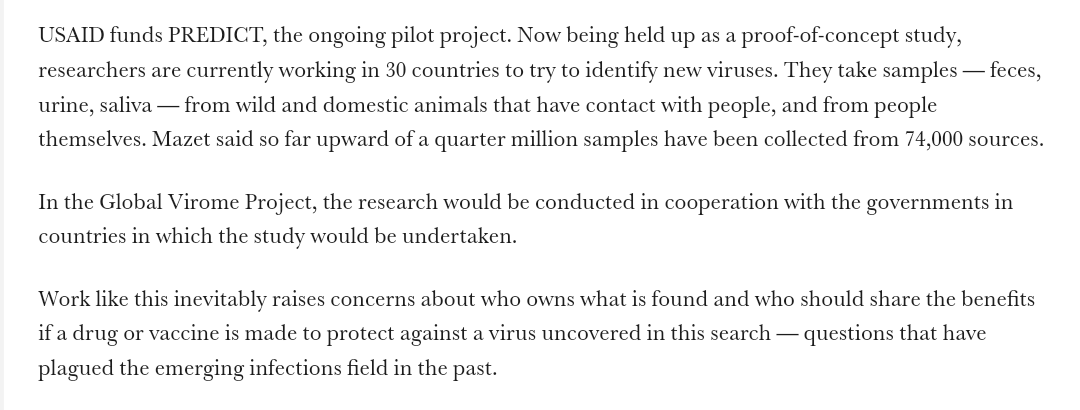
However, the Global Virome Project was formally launched on February 2018.
“Funding has been identified to support an initial administrative hub, and fieldwork is planned to begin in the first two countries, China and Thailand, during 2018."
science.sciencemag.org/content/359/63…


“Funding has been identified to support an initial administrative hub, and fieldwork is planned to begin in the first two countries, China and Thailand, during 2018."
science.sciencemag.org/content/359/63…

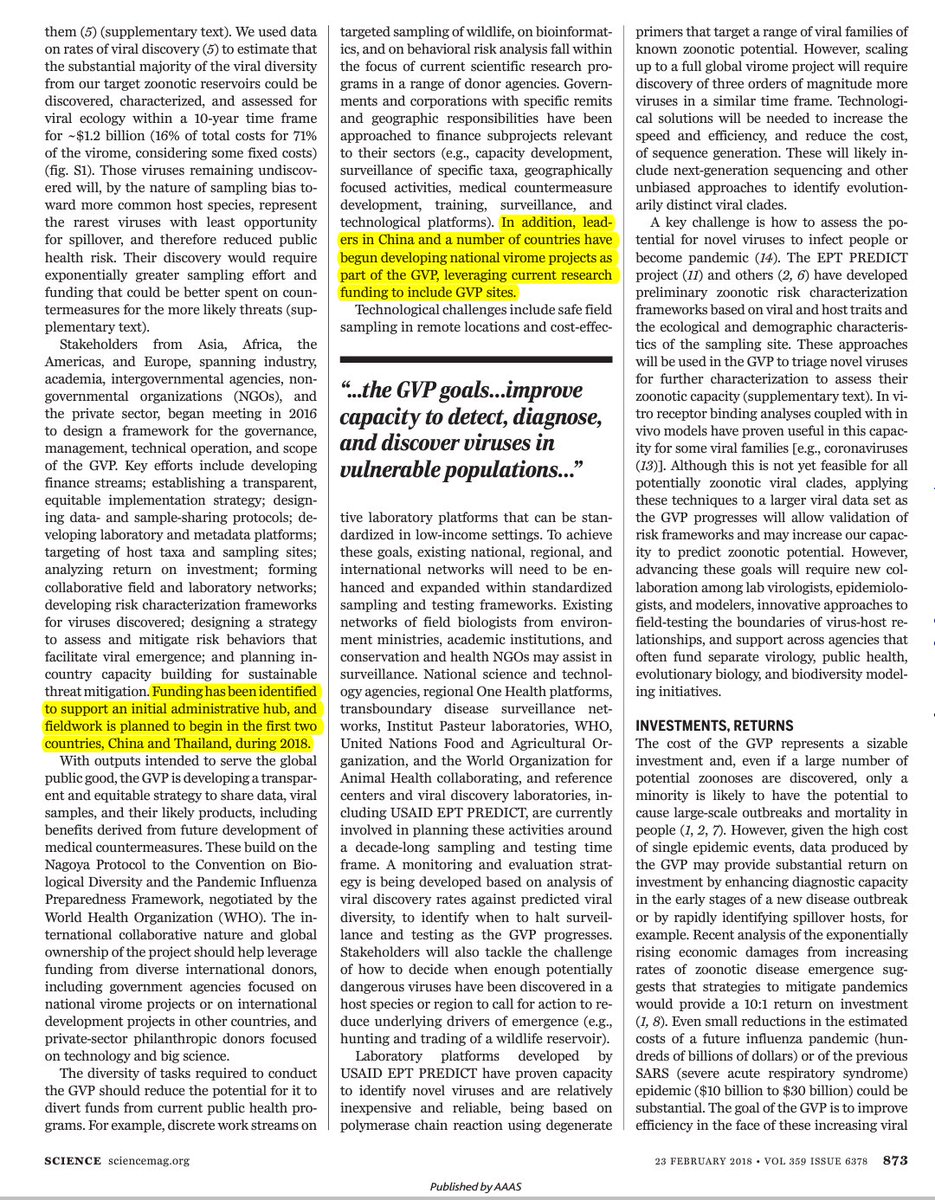
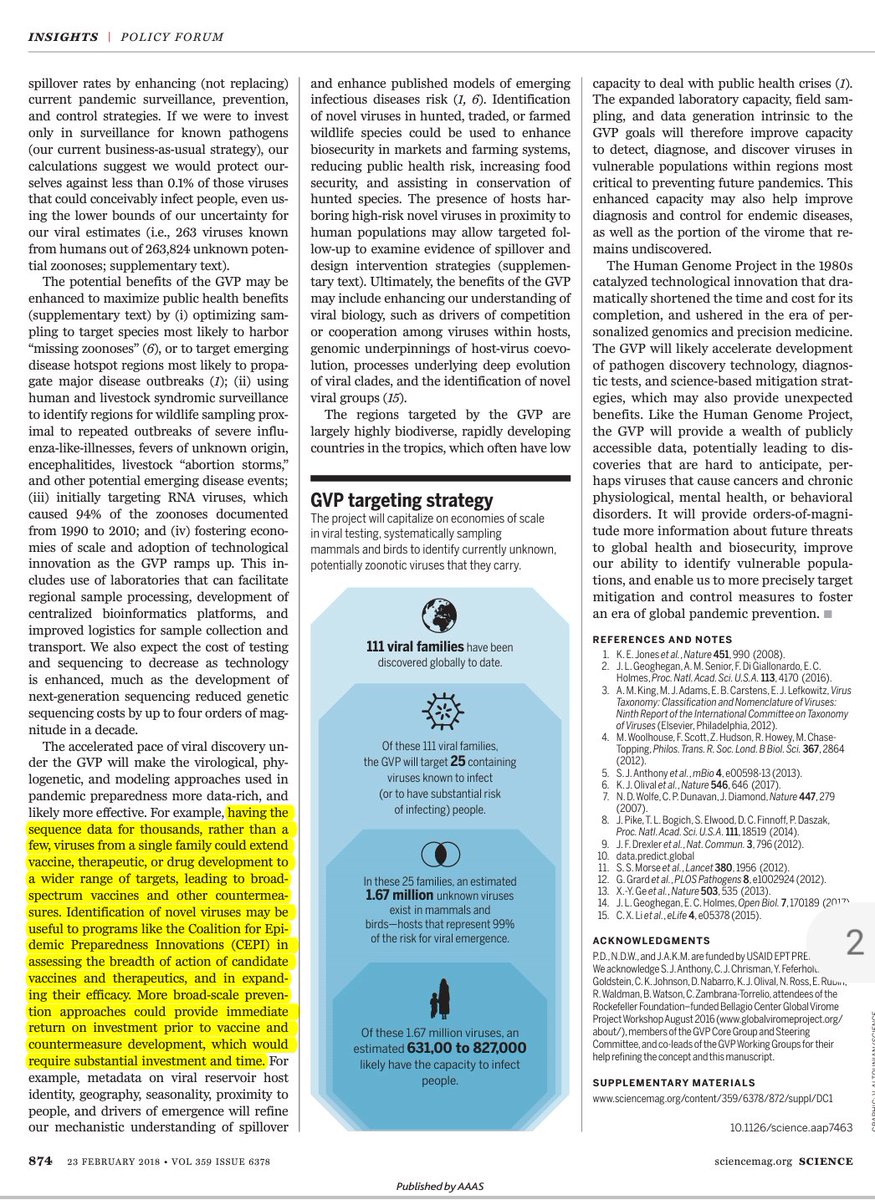
It is worth mentioning that Academician Gao Fu, director of the China CDC, is one of the authors of paper above, and China was poised to play a leading role in this project.
https://twitter.com/TheSeeker268/status/1275496414445879296?s=20
Also: “EcoHealth Alliance is committed to the GVP, a visionary undertaking which seeks to find and study the vast majority of the world’s 1.67 million unknown viruses. The hope is that we can learn everything to know about Disease X before it strikes.”
ecohealthalliance.org/2018/03/diseas…
ecohealthalliance.org/2018/03/diseas…
“We are about to start initial work in China and Thailand by studying bats, rodents, primates and water birds there,” said Peter Daszak, of the EcoHealth Alliance, one of the main supporters of the project.
theguardian.com/science/2018/j…
theguardian.com/science/2018/j…
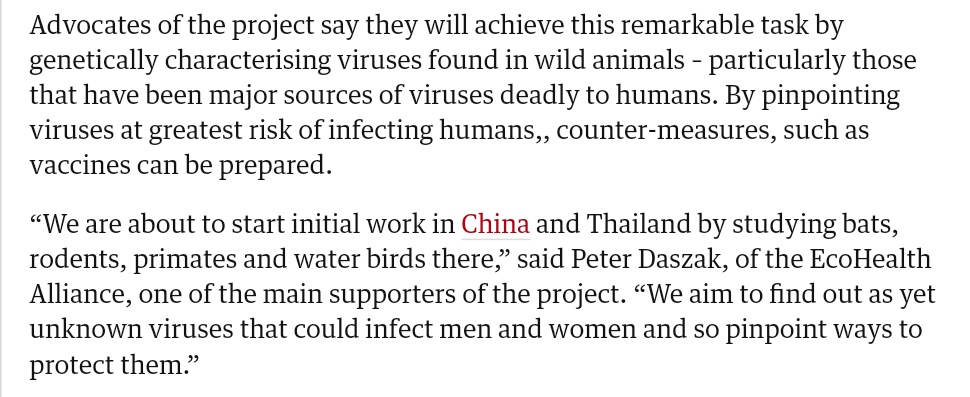
“PREDICT’s M&A team supported the development and strategic design of the GVP [...] PREDICT developed specific maps for the TNVP and the CVP and presented these at the TNVP launch, as well as in high-level meetings with Chinese Government."
ohi.sf.ucdavis.edu/sites/g/files/…
ohi.sf.ucdavis.edu/sites/g/files/…
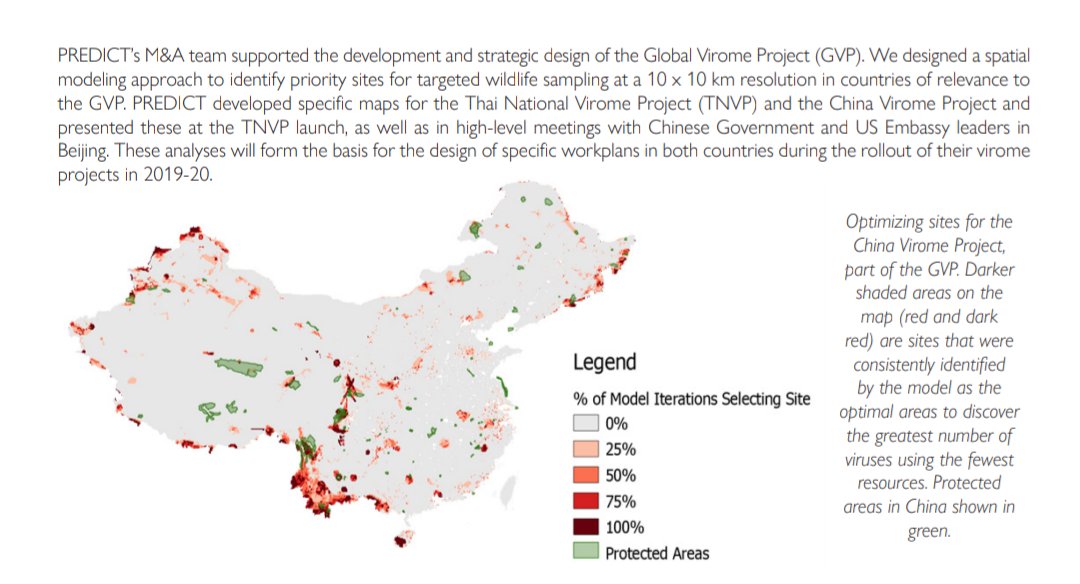
By 2019, it seems that they rechristened the China Virome Project with a new name – the China National Global Virome Initiative (CNGVI; part of the Global Virome Project). And that was the last we heard of it.
link.springer.com/article/10.100…
link.springer.com/article/10.100…

For some reason, the latest PREDICT report fails to mention anything about the China Virome Project (or CNGVI).
Not a single mention of it, but somehow the Thailand Virome Project got multiple shout outs. I wonder why?



https://twitter.com/JonnaMazet/status/1340043112169627648?s=20
Not a single mention of it, but somehow the Thailand Virome Project got multiple shout outs. I wonder why?

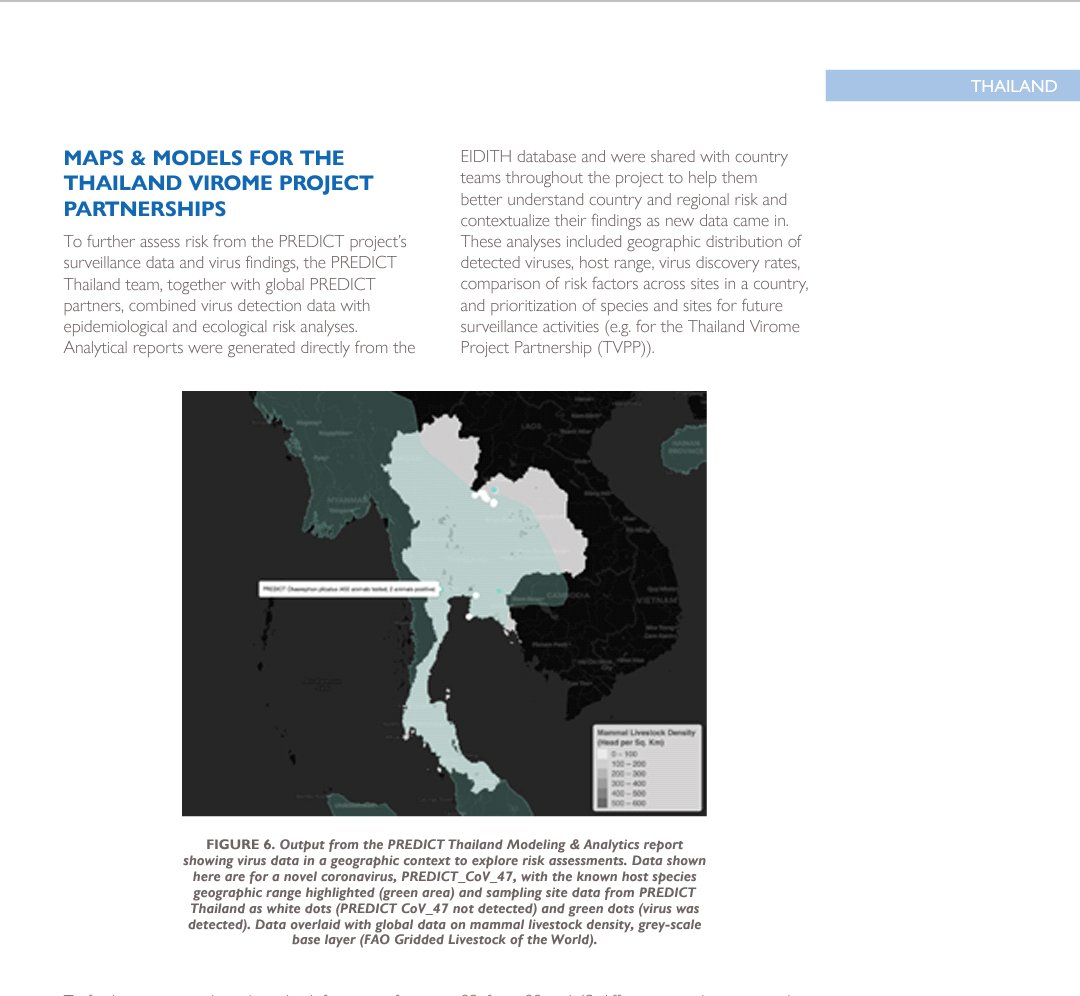
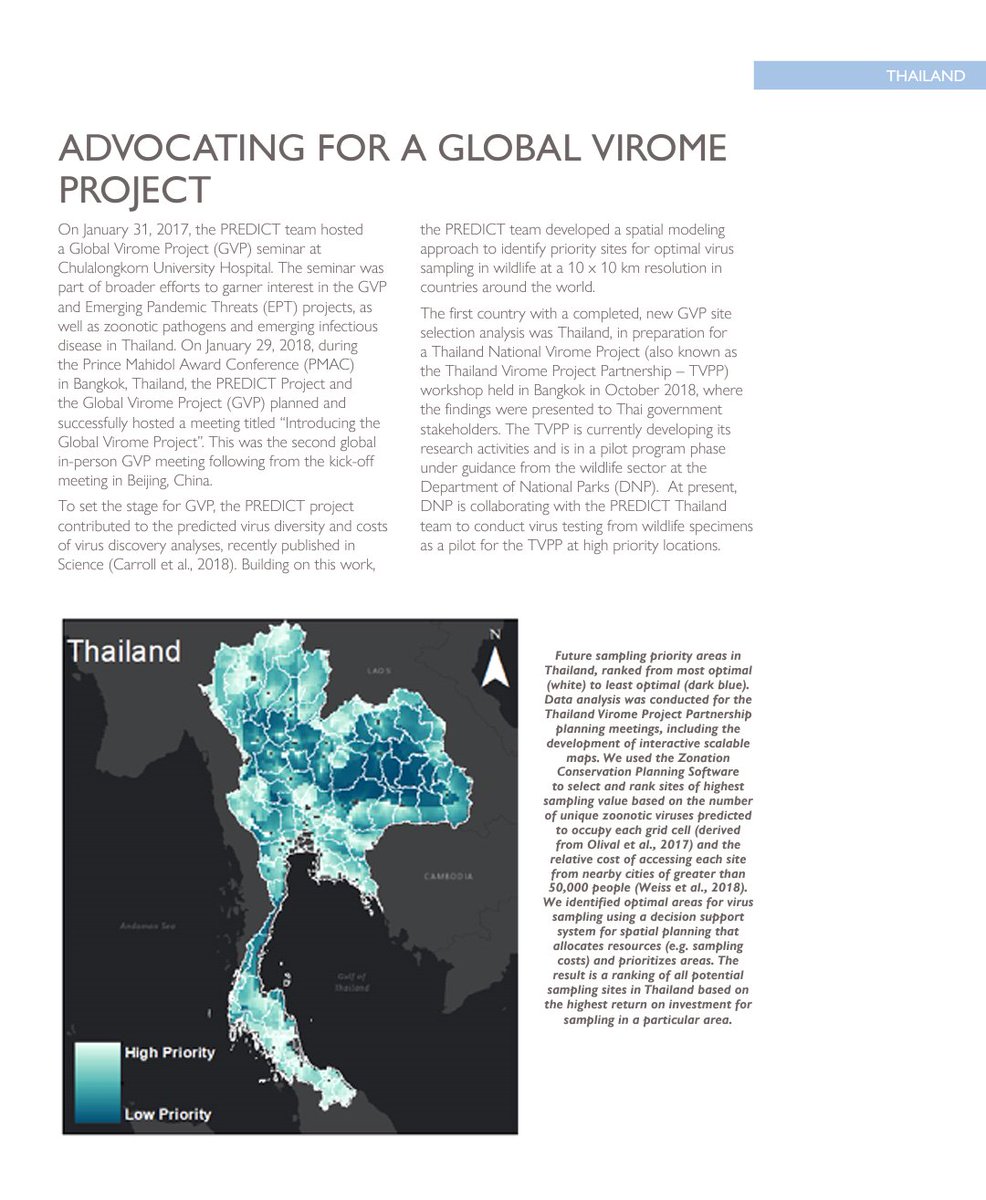

And now to end the thread, I'll post some interesting little snippets: "Some PREDICT projects will be taken over by other government agencies, such as the Pentagon’s Defense Threat Reduction Agency or the National Institutes of Health.” (September 2019)
nytimes.com/2019/10/25/hea…
nytimes.com/2019/10/25/hea…
“Our collaboration with the PREDICT country coordinator for China provided critical data” on the family that the Wuhan coronavirus belongs to, Mazet says.
“PREDICT helped raise the flag that these viruses have pandemic potential."
ozy.com/news-and-polit…
“PREDICT helped raise the flag that these viruses have pandemic potential."
ozy.com/news-and-polit…
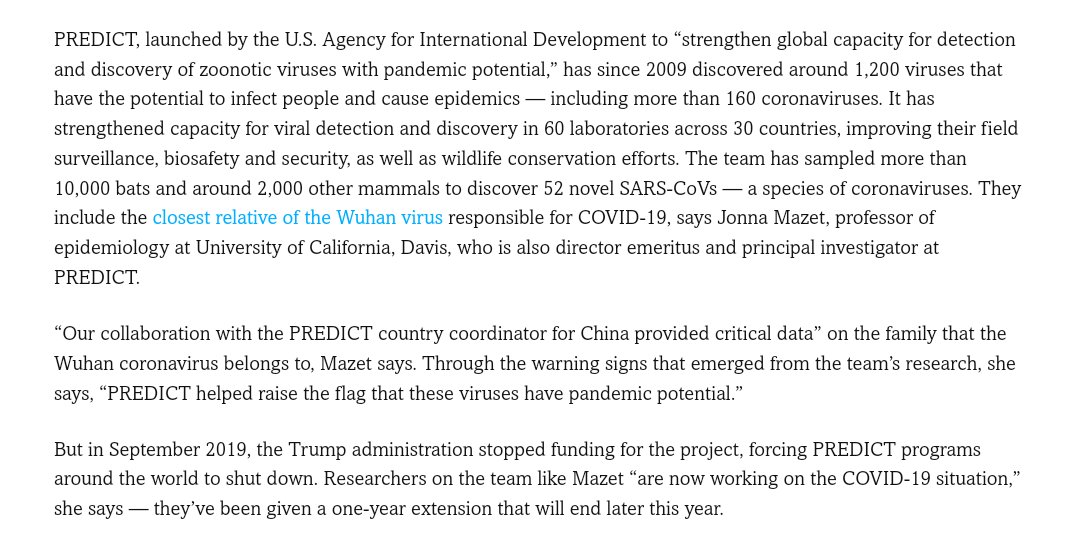
In a 19 April email to Daszak, Lauer wrote of WIV: “It is in the public interest that NIH ensure that a [grant] sub-recipient has taken all appropriate precautions to prevent the release of pathogens that it is studying.”
sciencemag.org/news/2020/04/n…
sciencemag.org/news/2020/04/n…
“We need to know all sites in China that have been in any way linked to this award,” Lauer wrote in one email to the [EcoHealth] researchers.
politico.com/news/2020/04/2…
politico.com/news/2020/04/2…
In a separate April 20 message to the group he said “it would be helpful for us to know about all China-based participants in this work since the Type 1 grant started in 2014 — who they were & how much money they received. The sooner you can get us that information, the better.”
"One of our goals (for the study) was to find out more about the genetic sequences of coronaviruses in bats and to get these into the hands of people who design vaccines and drugs. We had just begun work on this when the pandemic happened," Daszak said.
usatoday.com/story/news/wor…
usatoday.com/story/news/wor…
There was one other mention of China Virome Project that I stumbled across - from a 2019 job listing posted in the journal Virosin. (Shi Zhengli is the editor-in-chief of Virosin.)
virosin.org/news/JobNews/8…
virosin.org/news/JobNews/8…
• • •
Missing some Tweet in this thread? You can try to
force a refresh
